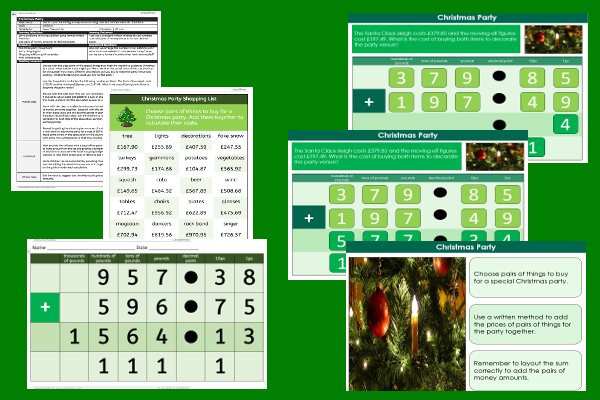Home > Key Stage Two > Maths > Number > Morey > Christmas Shopping
Lesson One – Christmas Party

This maths teaching pack for Key Stage Two gets the children to practise adding pairs of money amounts using standard written methods of addition to calculate the cost of buying different items for a Christmas party.
The class can explain and model how to correctly layout an addition columnar sum when adding pairs of money amounts to find the cost of holding a Christmas party.
Download this teaching pack including a lesson plan, classroom activities and an interactive presentation to practise adding pairs of money amounts using standard written methods of addition to calculate the cost of buying different items for a Christmas party
Activities in this teaching pack include a worksheet to select and add pairs of items to purchase for a Christmas party using standard written methods of addition and a template to use a standard written method to add a pair of numbers representing items purchased for a Christmas party.
The interactive presentation gets the children to how to add pair of money amounts using standard written methods of addition to calculate the cost of items for a Christmas party.
This lesson is part of a maths scheme of work to get the children to practise using formal written methods for addition and multiplication to calculate the cost of buying different items to celebrate a family Christmas. There are teaching activities for shared learning, differentiated worksheets to support independent learning and interactive presentations to introduce concepts and key skills.
-

Theme Park Visit
Practise identifying and calculating the timing and duration of rides and events when visiting a theme park on a special family trip
-

Family Holiday Trips
Identify and record how to compose and publish recounts using adverbials of time and place to describe family holidays to different places in the world
-

Money Multiplication
Explain and model how to use standard written calculation methods to multiply money amounts in pounds and pence when solving number problems
-

Sport Teams
Explain and model how to use brackets and dashes to add extra information to sentences describing how to play sports and games as part of a team
